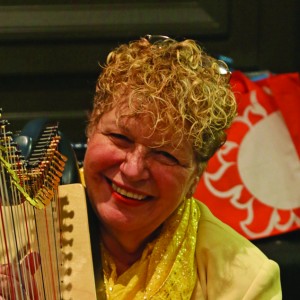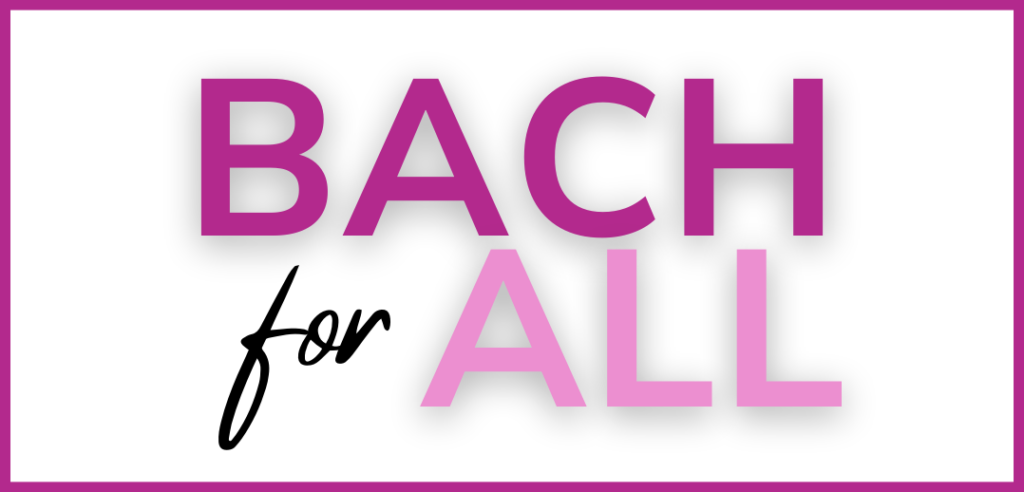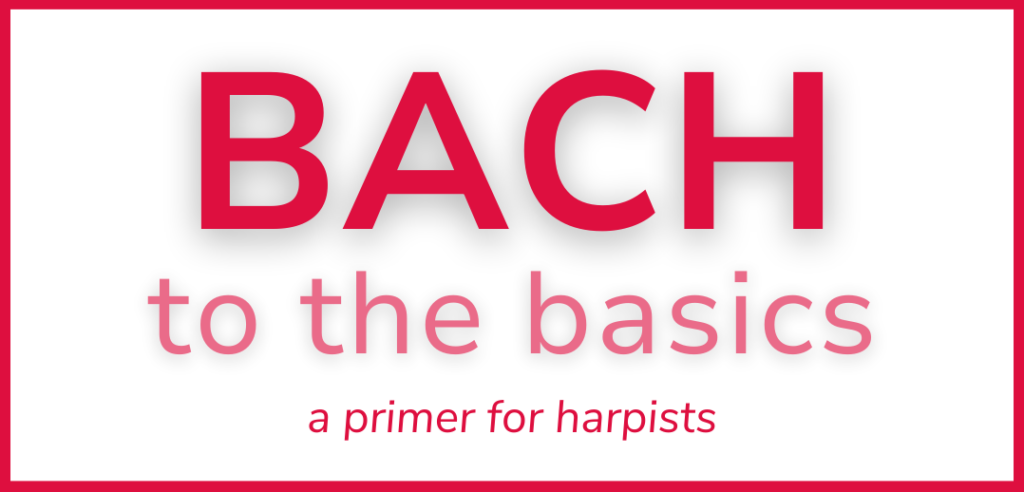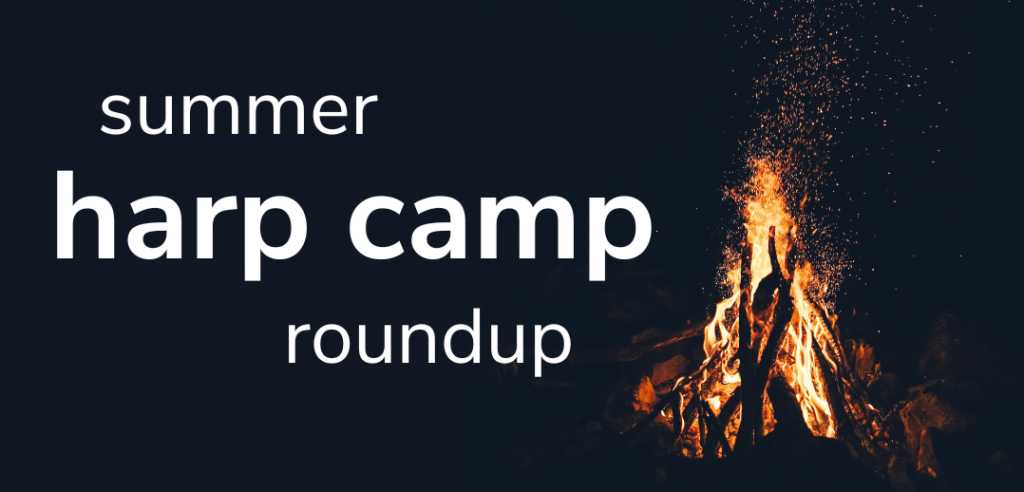—by Rhett Barnwell
Few areas of the harp world have seen the rapid growth that harp therapy has enjoyed in the last decade. In fact, the field is so new and has developed so quickly that there is some confusion even among harpists about what exactly harp therapy is and what musicians do in this field exploding in popularity.
Lever harpists largely spearheaded the harp therapy movement, and the majority of its practitioners today are lever harpists or come from a folk music background. But more and more classically trained pedal harpists are venturing into harp therapy, leaving their big instruments at home and playing on small lever harps that are easier to move, simpler to sanitize, and less intrusive in medical facilities.
Music Therapy
First, it’s important to understand the difference between “music therapy” and “harp therapy” or “therapeutic music.” Music therapy is a very distinct science, rooted in psychology, physical therapy, and interactive music. A music therapist must have at least a bachelor’s degree or higher from an accredited school to practice. Their work involves using music interactively with patients for various therapeutic applications, such as recovery of motor skills from an accident, treatment of dementia, easement of pain, etc. The therapy can be active or passive, and could include having the patient play simple drumming patterns, improvise on various simple instruments, sing, or just listen. Music therapists work in a wide range of settings, such as hospitals, nursing homes, psychiatric facilities, substance abuse programs, neo-natal care facilities and the like. It’s a bit of a generalization, but music therapy tends to be more interactive rather than passive, actually engaging the patient by getting them to do something with an instrument or their voice.
ABCs of Harp Therapy
The harp therapy world is filled with acronyms. Here’s a primer to keep them all straight.
CHT Certified Harp Therapist
CMHT Certified Master Harp Therapist
CMP Certified Music Practitioner
CTHP Certified Therapeutic Harp Practitioner
IHTP International Harp Therapy Program
MHTP Music for Healing and Transition Program
MTAI Music Thanatology Association International
NSBTM National Standards Board for Therapeutic Musicians
Harp Therapy
Harp therapy, or therapeutic music, on the other hand, takes a different approach to heal, alleviate suffering, or provide comfort to patients. The main distinction from music therapy is that therapeutic music is almost exclusively passive—the patient is simply listening to, or receiving the music that is being offered by the harpist, with no interaction expected. On occasion, there can be some interaction by the patient if desired, but generally speaking, “therapeutic music” is characterized by passive listening, sort of like going to a “musical spa,” whereas “music therapy” involves active participation by the patient, much like physical therapy.
Certification
Harp therapy, or therapeutic music, on the other hand, takes a different approach to heal, alleviate suffering, or provide comfort to patients. The main distinction from music therapy is that therapeutic music is almost exclusively passive—the patient is simply listening to, or receiving the music that is being offered by the harpist, with no interaction expected. On occasion, there can be some interaction by the patient if desired, but generally speaking, “therapeutic music” is characterized by passive listening, sort of like going to a “musical spa,” whereas “music therapy” involves active participation by the patient, much like physical therapy.
Volunteer Work
Outside of these specified programs are a variety of other situations in which therapeutic musicians may or may not be certified. Many harpists who have not gone through a formal training program still volunteer their time and talent to play at nursing homes, senior centers, and hospices doing therapeutic-style work. One such musician is Brook Boddie, a harpist, organist, composer, and arranger from Shreveport. La. For his master’s thesis at Louisiana State University, Boddie presented a project involving harp and vocal music at Holy Angels Residential Facility for individuals with intellectual and developmental disabilities in Shreveport. He has played the harp as a volunteer for the residents at Holy Angels for some time and used the opportunity of working on a graduate degree to observe the effects of music on the residents in a more structured fashion over the course of 10 weeks. He continues to play for the residents as a volunteer outside of the scope of the project. There are many other musicians who do similar volunteer work, which could also be categorized as “therapeutic music,” but are not certified by one of the existing programs. Harp therapists can certainly be volunteers, but more and more, health care facilities are willing to pay certified therapeutic musicians for their professional services.
In the Field
To better understand what this work looks like we profile four harpists, with completely different backgrounds, who have each gone through different certification programs, yet are united in the common goal of providing therapeutic music to people in various stages of need.

Angi Bemiss is one of those people that you rarely come across in the professional musical world. She is a prolific arranger and publisher of harp music (about 500 titles at last count) specifically geared toward harpists who want to play simple and beautiful pieces, much of it appropriate for therapeutic settings. The rarity is found, though, in her honest humility and lack of self-promotion. She prefers not to be center-stage and does not like to perform in public concerts. However, she plays in church or for the wedding of a friend at the drop of a hat, and spends a good deal of her time outside of her demanding day job as an accounting consultant playing for patients at Northside Hospital in Atlanta, where she has served for over 15 years.
Bemiss has been a musician for most of her life. Piano was her first instrument, starting at age 6 and later working as a church pianist. During her school years she also played other instruments, including the flute, oboe, and guitar. In 1989, her husband surprised her with a harp (and lessons) for their 10th wedding anniversary. Almost from the beginning, Bemiss says she wanted to play the harp in hospitals. She became a Certified Music Practitioner (CMP) in 1998 through the Music for Healing and Transition Program (MHTP). Since its inception in 1994 the MHTP program has graduated over 780 CMPs. The program, founded by Laurie Riley, Martha Lewis, Mary Radspinner, and Maryann Schutz, is not limited to harpists, and includes musicians who play other acoustic instruments that would be suitable in a therapeutic clinical setting. The course is offered in a series of weekend modules, intensive retreats, a clinical practicum, independent reading, and musical proficiency and repertoire development.
Since becoming a CMP, Bemiss has provided thousands of hours of therapeutic music at the bedside and in the medical departments of hospitals, hospices, memory-care units, and home settings. She plays in all departments during her twice-weekly two-hour visits to Northside Hospital. “I used to schedule my times and locations,” she says. “But for the past 10 years I’ve simply arrived and played where I felt led to play.” Bemiss keeps her Dusty Strings FH32 harp at the hospital, pushing it on a cart as she moves around the hospital. “I play a lot from memory,” she says, “but I also keep a complete repertoire in a series of books there. And, for the past year, I’ve been using the forScore app on my iPad a lot. It’s convenient, and it’s great to have nearly 800 songs at my fingertips.” Depending on the situation, Bemiss asks the patient or family what type of music they like or if they have a preference of what type of music she plays. When she plays, the sound carries throughout the floor she is on, and people often come out into the hallway to talk with her. “My all-time favorite comments have been some version of ‘I felt the music before I even realized that I was hearing it.’ Music is powerful,” Bemiss adds, “and I believe it reaches our soul. I consider it an honor and a privilege to have a role in creating a healing environment.”

Laurence Furr has followed the well-worn path of harpists who began their musical careers as organists. There seems to be somewhat of a natural transition from one to the other, although the instruments are technically unrelated, for the most part. Furr is the Director of Music Ministries and Organist at Trinity Lutheran Church in Fort Worth, Texas. He has a bachelor’s and master’s degree in organ performance and a Ph.D. in music and art history. Furr also received a Fulbright Scholarship to study harpsichord at the Royal Superior Conservatory of Music in Madrid, Spain. Furr used his harp skills to complete the Harp for Healing Clinical Musician Certification Program in 2014, making him a Certified Clinical Musician. He spends his time in this capacity at John Peter Smith Health Network, playing therapeutic music in all departments of the hospital, including the ICU, oncology, labor and delivery, and more.
The Harp for Healing Program is an independent study program with students and graduates throughout the U.S., Canada, Australia, and around the world. It is accredited by the National Standards Board for Therapeutic Musicians (NSBTM). While students work independently to complete the course, they are not alone. They receive personalized support from an experienced mentor and the program director. Recorded conference calls provide expanded educational opportunities on multiple topics to students and graduates of the program. An internship of 45 hours is required—25 hours at a hospital and 20 hours at a hospice facility. The program was developed in 2002 by Laurie Riley, CMP, a pioneer in the field of clinical music (she has also developed other programs, including the MHTP).
During a typical day, Furr will play in patients’ rooms. “If they are connected to monitors, I watch these closely and observe the patient’s movements and responses, as well as changes in blood pressure and heart rate,” he says. “I will alter the music until I find something that seems to help the patient relax.” Furr will also play in hospital corridors or near the nurses’ stations. “Recently, a surgeon asked that I play inside the operating room or near the door, as the music reduced the level of stress and helped the staff to relax while performing surgery.”

Like many therapeutic musicians, Edie Elkan brings to the table, or in this case, the bedside, a unique and varied background of education, interests, and experience. Instead of being content to sit on her laurels and enjoy the fruits of her significant professional success, she continues to pursue studies in areas that complement her therapeutic work.
To this end, she went back to school later in life and earned a Master’s degree in Liberal Studies from Thomas Edison State College in 2007. Now, mind you, she had already attended the Philadelphia Musical Academy in the mid 1960s, majoring in harp and music education, studying classical harp with renowned pedagogues Mary Ann Castaldo and Marilyn Costello. She later continued her harp studies, again in Philadelphia, in 1996 with Elizabeth Hainen, current principal harpist of the Philadelphia Orchestra. As someone interested in the larger “hand basket of arts”, she earned a bachelor of arts degree in English (concentrating on non-fiction writing) from the University of Pennsylvania in 1988.
Elkan began to use the harp as a therapeutic instrument back in 1994. There was undoubtedly something going on during this time, as many of today’s harp therapy movements and programs were either gaining traction or taking root during that time. Elkan had lofty goals for what she wanted to accomplish in harp therapy. Her vision was to partner with a major medical facility, within which she would set up a program to play for patients, their loved ones, and staff; teach folk harp to staff and community at the medical facility, for their own healing and enjoyment; train, prepare, and certify harpists to work in a variety of medical settings; and collaborate with the medical facility on research projects to provide evidence-based data on the effectiveness of harp therapy. This was a tall order, indeed, and at the time no one in healthcare knew what harp therapy was, much less was willing to fulfill Elkan’s vision.
Undaunted, Elkan pressed forward, offering patients and staff at hospitals, hospices, rehabilitation centers, nursing homes, and in doctor’s and even dentist offices a taste of harp therapy on a volunteer basis. It was in the aftermath of the September 11 attacks and the anthrax poisonings that Edie was asked to play classical pedal harp for an event featuring Bernie Siegel, M.D., a physician and author who writes about the relationship between the patient and the healing process. Elkan not only brought her concert harp with her that evening, but her small harp and some brochures describing harp therapy. It took only a moment for Sheila Birnbaum, then Patient Relations Manager at Robert Wood Johnson University Hospital Hamilton, to embrace Edie’s concept. Birnbaum thought that harp therapy might be the missing element her hospital was in need of, as it was actively treating the anthrax-infected postal workers. It was through this relationship that Elkan launched her Bedside Harp program in 2002.
Elkan directs all of the organization’s offerings at Robert Wood Johnson University Hospital Hamilton as well as at four other hospitals in the area and at Bucks County Community College in Newtown, Pa. Bedside Harp is unique in that it is the first exclusively college-based, hospital-hosted harp therapy program. The program offers certification on two levels: Certified Harp Therapist (CHT) and Certified Master of Harp Therapy (CMHT). It is offered primarily through a rigorous curriculum of face-to-face classroom studies, mentored internship, one-on-one contact hours, and a supplement of online coursework. Certification generally takes two years to complete, and there are various other requirements for each level of the program.
During her career, Elkan has played over 3,000 hours at the bedside of patients. Wearing your professional hat to get the job done during situations that can be emotionally charged is something all therapeutic musicians learn how to do. But the core of what therapeutic musicians do really hit home with Elkan recently when she played for two family members. “Although heartbroken, I feel blessed to have been able to ease both of their pain and anxiety at least somewhat, by playing for them. And such is the gift of being a harp therapist—in the very midst of suffering and even death, to soothe, comfort, and offer hope with our little harps.”

Melody Long Anglin, who lives in Daytona Beach, Fla., is a classically trained harpist, composer, and soprano soloist. She received her bachelor’s and master’s degrees in music and pursued post-graduate work at the American Institute of Musical Studies in Graz, Austria and at the University of Connecticut. She has enjoyed a successful career performing and teaching and decided to put her extensive musical skills to therapeutic use by becoming certified in the International Harp Therapy Program (IHTP). Founded by Tina Tourin, who has a degree in music therapy, the IHTP is unique among the other harp therapy programs in that Certified Therapeutic Harp Practitioner (CTHPs) as they are called, offer both bedside music and interactive work with patients. The harp is the only instrument used in this program, and the course is now offered online, with each student being assigned a personal mentor for the duration of study. The program endorses a balance between music, medicine, and spirituality, and is accredited by the NSBTM.
Anglin subsequently went on to form the Harmonious Life and Health Institute, a company dedicated to the study of musical sound for health and healing. Anglin says she uses her harp-based vibro-acoustic approach for a wide range of patients—from those recovering from acute trauma to those suffering from chronic pain to those in hospice care. “Thanks to an expanding list of patient testimonials and professional referrals by chiropractors, massage therapists, psychologists and kinesiologists,” she says, “this is currently my main area of focus.”
What was a fledgling field with virtually no institutional support and little credibility a generation ago, has become a mainstream and viable career option for harpists today. Harp therapists come from widely varying musical backgrounds—from classical to folk—and take a number of training paths to certification, but they all have the same overall goal: to bring peace, comfort, and healing to people in need. The need may be physical—certain types of harp music have been proven to reduce blood pressure, heart rates, and pain levels. The need may be emotional—someone needs to hear a certain type of music to begin to come to terms with illness of a loved one. Or perhaps the need is spiritual, and hearing someone play music that connects on this level can be truly healing and cathartic. Therapeutic harp music can be a powerful tool for good and, for harpists doing this kind of work, is not just a professional pursuit but also a labor of love. •















